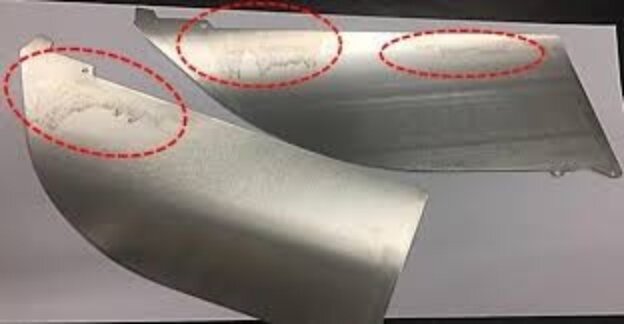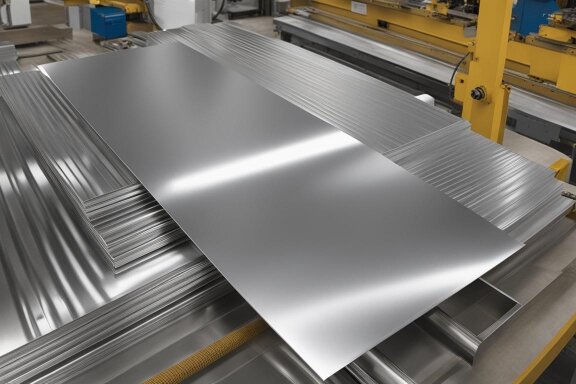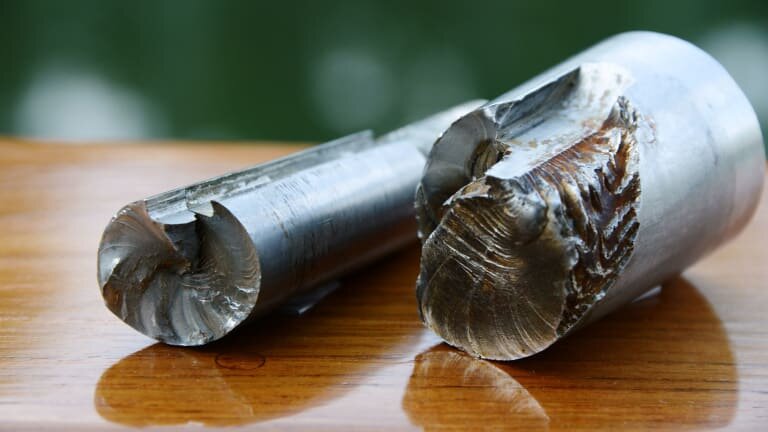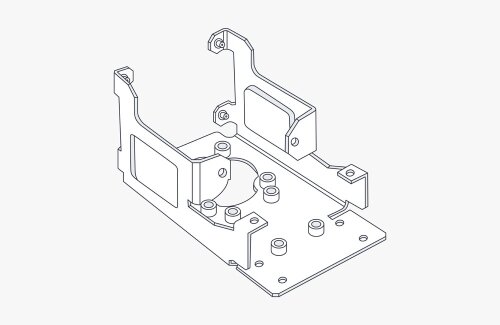Metal exposed to heat treatment, welding, or other fabrication processes often develops a coating of rust or scale. These impurities may compromise the durability and quality of the final product. Pickling metal solves this problem by removing surface imperfections. This step is crucial to the longevity and quality of the finished product.
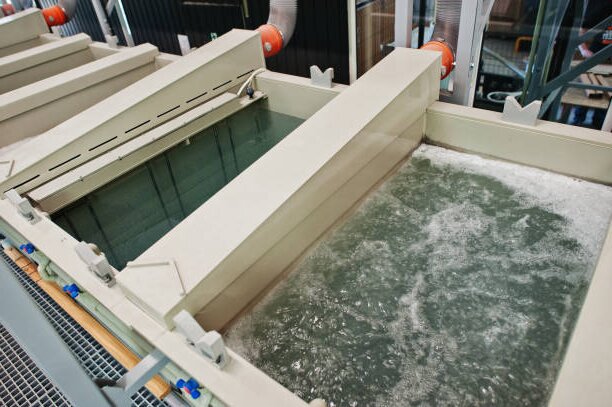
What Is Metal Pickling?
What is Pickling?
Pickling removes impurities from metal surfaces, such as scales, rust, and oxides. The metal is immersed in an acidic solution (usually hydrochloric acid or sulfuric acid), which dissolves the contaminants. The metal will be left with a smooth, clean surface, ready to undergo further processing such as painting or coating.
Why is pickling necessary in metal fabrication?
A clean surface in metal fabrication is essential to ensure durability and quality. Pickling is necessary to remove impurities such as rust and scale that can weaken the welds or interfere with coating adhesion.
Types of metals commonly pickled
Pickling is an essential process in metalworking. It removes impurities from the surface and prepares it for further treatment. The most common metals to undergo pickling are:
Steel Pickling
- Removes scale, rust, and other impurities formed during manufacture or heat treatment.
- Acid solutions (hydrochloric sulfuric phosphoric) are commonly used.
- Pickling methods for carbon steels and alloys are different.
Pickling Stainless Steel
- Removes heat-induced oxides and other contaminants.
- It is usually a combination of hydrofluoric and nitric acids.
- For a desired surface finish and corrosion resistance.
Aluminum Pickling
- Removes the oxide layer formed during manufacture or exposure.
- Depending on the alloy, you can use either acidic or alkaline solutions.
- It is essential for improving the adhesion of coatings and enhancing appearance.
Copper and Brass Pickling
- Remove oxides and impurities before plating or applying other finishes.
- Acid solutions (sulfuric and nitric acid) are frequently used.
- Polymer pickling often requires additional chemicals, such as sodium chloride or soot.
Other Metals that Undergo Pickling
Other metals, though less common, can also be pickled:
- Titanium: Removes mill scale and surface impurities.
- Nickel: Preparation of the surface to be coated or otherwise covered.
- Magnesium: Removes oxidation layers to improve corrosion resistance.
- Precious Metals: Used to prepare surfaces in jewelry and electronic devices for finishing.
Note that the pickling process and solution choice depend on the metal and alloy composition and the desired result.
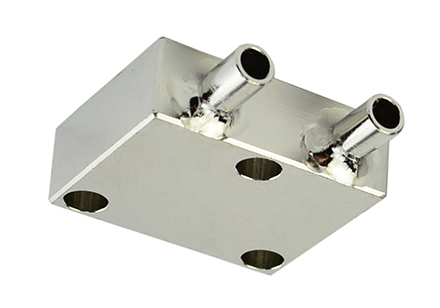
Metal Pickling Techniques and Processes
Chemical Pickling: What it is and How it Works
- The most common method.
- Metall parts are immersed in an acid solution. To remove oxides, scale, and other impurities
- Acid concentration, temperature, and immersion time are all critical factors.
- Acid consumption is high.
- Acid waste is a source of environmental concerns.
The Electrolytic Pickling Process: A Brief Overview
- Pickling with a chemical solution is faster and less efficient.
- Anodes are used to immerse metal parts in electrolyte solutions.
- The oxide layer dissolves when an electric current is applied to the solution.
- Chemical pickling has a lower acid consumption and a less harmful environmental impact.
Mechanical Descaling vs. Pickling
- Mechanical Descaling Uses physical force to remove scale and other impurities (e.g., shot blasting or grinding).
- Pickling is a chemical or electrochemical reaction.
- For optimal results, both methods are often combined.
The Pickling Bath Composition: Its Impact
- The acid type and concentration determine pickling efficiency and metal attacking rate.
- Add inhibitors to improve surface finish and reduce metal dissolution.
- Additives improve pickling performance while reducing environmental impact.
Temperature and Pickling Time Control
- Temperature: Affects acid consumption and pickling rate. Higher temperatures generally accelerate the process but increase metal attack.
- Time: Determinates the extent of scaling removal. Over-pickling can cause surface damage and over-pickling if you spend too much time.
- For consistent results, it is essential to control both parameters precisely.
Metal Pickling Solutions and Chemicals
Typical acids used in pickling (Hydrochloric Sulfuric etc.
Pickling acid is chosen based on metal type, scale thickness, and desired surface finish.
- Hydrochloric acid (HCl): Widely used for steel pickling due to its fast action, but it can cause excessive metal attack.
- Sulfuric acid (H2SO4): Less aggressive than HCl, often used for stainless steel and copper alloys.
- Phosphoric Acid (H3PO4): Forms protective coatings for metals that improve corrosion resistance.
- Hydrofluoric Acid (HF): Used with other acids to remove oxides from stainless steel.
- Nitric acid (HNO3): Often used with HF for stainless steel pickling.
Neutralizing Agents After Pickling
It is essential to neutralize the acid residue on the metal surface after pickling to improve adhesion and prevent corrosion. Neutralizing agents are:
- Sodium hydroxide (NaOH): Strong alkaline solution for effective neutralization.
- Lime: A less aggressive alternative to NaOH.
- Neutralizing Salts: Specially designed salts to adjust pH precisely.
Metal Pickling Equipment Setup
Essential Equipment for Pickling
The equipment required for pickling depends on the size of the operation, the metal to be pickled, and the pickling method. Most pickling processes use the same essential equipment.
- Pickling Tanks: These tanks can be made from a variety of materials, such as stainless steel, rubber-lined metal, or plastic, depending on the acid that is used.
- Heating and cooling systems: To control the pickling bath temperature.
- Agitation Systems: To prevent scale accumulation and ensure uniform acid distribution.
- Filtration System: To remove solid particles from the pickling liquid.
- Material Handling Equipment: To load and unload metal parts.
- Ventilation System: To eliminate acid fumes.
Pickling Baths Design and Maintenance
Pickling baths must be appropriately designed to ensure their safety and efficiency. The following are key considerations:
- Material compatibility: The bathing material must be resistant to the acid.
- Size and shape of the tank: The tank size should be large enough to accommodate workpieces, and the shape must allow for efficient acid circulation.
- Heat and cooling systems: Temperature control is crucial for optimal pickling results.
- Agitation System: Properly agitating ensures a uniform acid concentration and prevents scaling.
- Filtration system: Regular filtration maintains pickling solution quality.
- Maintenance: Regular inspection and cleaning is necessary to avoid corrosion and equipment failure.
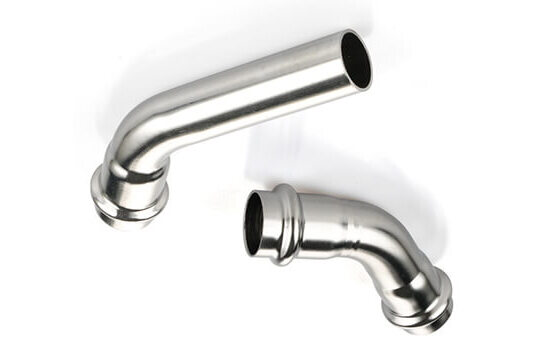
Uses of Metal Pickling in Various Industries
Pickling has many applications in a wide range of industries. Explore some key industries:
Automotive Industry
- Body panels: Remove oxides and scale to improve the adhesion of paint and corrosion resistance.
- Engine component: Prepares surfaces for plating or coating.
- Exhaust system: Removes impurities and scale to improve durability and performance.
Construction and Infrastructure
- Steel Structures: Prepares the steel for painting, coating, or other protective coats.
- Reinforcing bar: Increases bond strength between concrete and reinforcing bars.
- Metal components: Prepare metal for welding, assembly, or finishing.
Aerospace and Aviation
- Aircraft component: Removes heat-induced oxides and other impurities to maintain structural integrity.
- Engine Parts: Prepares parts for plating, coating, or assembly.
- Titanium alloys and aluminum alloys: Removes surface contaminants to improve performance.
Electronics and Consumer Goods
- Printed Circuit Boards (PCBs): Prepares the copper surface for plating and etching.
- Metal housings: Improve appearance, corrosion resistance, and durability.
- Stainless Steel Appliances: Removes heat-induced discoloration and prepares for final finishing.
Oil and Gas Industry
- Pipeline Components: Removes impurities and scale to improve weldability and prevent corrosion.
- Oilfield Equipment: Prepares metal surfaces for coatings and protects against harsh environments.
- Offshore Platforms: Increases durability and resists saltwater corrosion.
Food and Beverage Industry
- Equipment for food processing: Removes contaminants from surfaces and prepares them for sanitation.
- Beverage Containers: Improves cleaning and prevents contamination of products.
- Kitchen Equipment: Maintains hygiene and extends the life of equipment.
Metal Pickling: The Challenges
Pickling: Common issues
Pickling is essential, but it presents several challenges.
- Adhesion of scale: Stiff, stubborn scales can be difficult or impossible to remove. They may require longer pickling time or more robust acid solutions.
- Acid Consumption: High acid usage increases costs and environmental impacts.
- Acid attack on metal: An excessive amount of acid can cause surface roughness or dimensional changes.
- Embrittlement by hydrogen: The hydrogen generated during pickling may cause certain steels to become brittle, changing their mechanical properties.
- Environmental Concerns: Acid fumes and acid waste disposal are significant issues.
Avoiding Metal Damage and Over-Pickling
Preventing metal damage and over-pickling:
- Control with precision: Closely monitor pickling temperature, time, and acid concentration.
- Inhibitors: Use the appropriate inhibitors for metal protection.
- Acid analysis is essential: Maintain optimum acid concentration.
- Maintenance of equipment: Ensure the heating, cooling, and agitation systems are working correctly.
Corrosion from Pickling
Pickling can lead to corrosion.
- Thorough Rinsing: Remove acid residues to avoid corrosion after pickling.
- Neutralization: Neutralizing agents are used for pH adjustment and corrosion prevention.
- Drying: Dry the parts as soon as possible to reduce exposure to moisture.
- Protective Coatings: Apply coatings and passivations as quickly as possible after picking.
Different Surface Treatments and Metal Pickling
Pickling is one of the many surface treatments used in metalworking. Here are some alternatives to pickling.
Other Surface Treatments vs. Pickling
| Treatment | Process | Purpose |
|---|---|---|
| Pickling | Chemical immersion | Removes oxides, scale, and impurities |
| Sandblasting | Abrasive blasting | Removes impurities, creates rough surface |
| Shot blasting | Metal shot projection | Cleans, descales, and strengthens surface |
| Grinding | Abrasive wheel removal | Removes material to achieve desired shape and finish |
| Polishing | Abrasive or chemical removal | Creates a smooth, reflective surface |
| Electroplating | Electrolytic deposition | Applies a metal coating for protection or aesthetics |
| Anodizing | Electrochemical process | Creates a protective oxide layer on aluminum |
The Differences
- Mechanism: Pickling involves chemical reactions, while other processes involve electrochemical or mechanical processes.
- Purpose: Pickling removes impurities, and other methods can alter the surface texture.
- Material Removal: Pickling can remove a minimal amount of material, while grinding and polishing may remove a significant amount.
- Surface Finish: Pickling produces a matte surface finish. Other methods can produce a variety of finishes, from rough to mirror-like.
When to Choose Pickling?
Pickling is perfect for:
- Remove oxides and scales from ferrous and Non-ferrous Metals
- Surface preparation for coatings and treatments
- Improve adhesion to coatings
- Enhancing corrosion resistance
Best Practices to Pickle Safely and Efficiently
Optimizing Pickling Parameters
- Precision control: Maintain constant temperature, time, and acid concentration.
- Optimize inhibitors: Select the appropriate inhibitors for specific metal types and acid solutions.
- Pilot tests: Conduct small-scale tests to determine the optimal pickling conditions.
- Continuous Monitoring: Use sensors and analytical tools to track pickling parameters.
Quality Control Measures
- Conduct regular inspections: Check the composition of pickling baths and equipment.
- Surface Finish Evaluation: Assess picked parts for desired standards of quality.
- Statistical Process Control (SPC): Implement Data-driven Process Improvement.
- Documentation: Keep detailed records on pickling processes.
Train and educate pickling personnel.
- Safety Training: Stress the importance of emergency procedures and PPE.
- Process Knowledge: Provide detailed training on pickling chemistry, equipment operation, and chemistry.
- Develop problem-solving skills: Prepare personnel to identify pickling problems and resolve them.
- Continuous Learning: Encourage continuous training and development.
Integrating pickling with other surface treatment processes
- Sequencing: Determine optimal order for pickling and other treatments.
- Equipment Compatibility: Ensure the pickling equipment is compatible with downstream equipment.
- Surface Preparation: Optimize Pickling for Optimal Adhesion to Coatings or Other Finishes
- Cost-effectiveness: Evaluate the overall efficiency and cost-benefits of the integrated process.
Conclusion
Metal pickling is an essential process in many industries. It plays a crucial role in ensuring the quality and durability of metal components. The effectiveness of pickling directly impacts the performance and durability of metal parts, from automotive and aerospace to foods and beverages. Pickling metals to improve their corrosion resistance and adhesion is done by removing oxides and impurities.
Do you need a reliable sheet metal parts manufacturer? Shengen is the place to go. We specialize in sheet metal laser cutting, bending, surface finish, and CNC Machining. Reach out to Shengen Today and seek help from professionals!
FAQs
What is the effect of pickling on metal properties?
Pickling removes rust, oxides, and scale from metal surfaces. It increases corrosion resistance and prepares metals for welding or coatings. It can alter the texture of the metal if done incorrectly. However, the core properties of the metal are not affected.
Is pickling an environmentally friendly process?
Acids used in pickling can pose environmental hazards. Its impact can be reduced with the proper waste management and treatment protocols. Safe disposal and recycling pickling solutions are crucial to reducing environmental damage.
Can you pickle at home?
Pickle at home is not recommended due to the dangers of acids and chemicals. This requires special equipment and safety measures. Consider safer alternatives, such as mechanical cleaning, for small projects.
More Resources:
Steel Descaling Process – Source: Kingsteelcorp
Corrosion Resistance in Metals – Source: Metaltek
Hey, I'm Kevin Lee

For the past 10 years, I’ve been immersed in various forms of sheet metal fabrication, sharing cool insights here from my experiences across diverse workshops.
Get in touch

Kevin Lee
I have over ten years of professional experience in sheet metal fabrication, specializing in laser cutting, bending, welding, and surface treatment techniques. As the Technical Director at Shengen, I am committed to solving complex manufacturing challenges and driving innovation and quality in each project.

